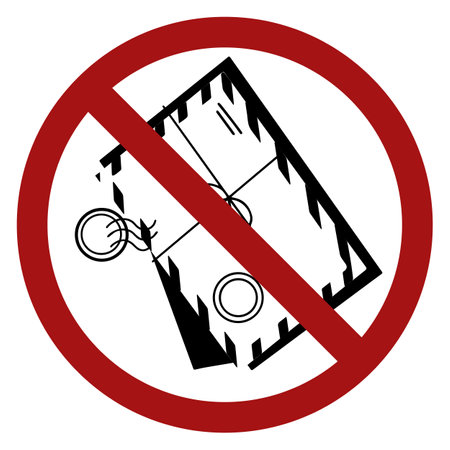1. Research Your Campground and Regulations
Before you pack your gear and hit the road, its important to do a little homework about where youre going. Every campground, whether its in a national park or a local state site, has its own set of rules, regulations, and environmental conditions. Taking time to understand these details can make or break your camping trip.
Know the Rules Before You Go
Some campgrounds require reservations, have quiet hours, limit campfire use, or dont allow pets. Others may have restrictions based on weather conditions or wildlife activity. Checking the official website of the campground or calling ahead can save you from surprises.
Common Rules You Might Encounter
| Rule | Why It Matters |
|---|---|
| No campfires during dry season | Prevents wildfires in high-risk areas |
| Bear-proof food storage required | Keeps both campers and wildlife safe |
| Quiet hours (usually 10 PM – 6 AM) | Respects fellow campers’ rest and peace |
| Pets must be leashed at all times | Protects wildlife and other campers |
Check for Wildlife Warnings
Each region comes with its own set of wildlife concerns. In some areas, you might encounter bears, snakes, or even poisonous plants. Check posted warnings or ask park rangers if there are any current animal sightings or alerts in the area.
Understand Local Environmental Conditions
The environment plays a huge role in how you prepare. Are you camping in a desert with extreme heat? Or in the mountains where temperatures drop fast at night? Knowing what to expect helps you pack the right gear and clothing.
Quick Checklist: What to Research Before You Go
- Reservation requirements and fees
- Campfire rules and fire bans
- Wildlife safety tips specific to the area
- Weather forecast and seasonal conditions
- Local emergency contacts and ranger station info
A little planning goes a long way when it comes to camping safely and responsibly. Being informed not only keeps you out of trouble but also ensures a more enjoyable experience for everyone at the campground.
2. Pack Appropriate Safety Gear
When youre heading out for your first camping trip, packing the right safety gear is just as important as choosing a great campsite. Being prepared helps you stay safe, comfortable, and ready for anything Mother Nature throws your way.
Must-Have Safety Essentials
Here’s a quick checklist of the basic safety gear every first-time camper should bring:
| Item | Why You Need It |
|---|---|
| First Aid Kit | For treating minor cuts, scrapes, insect bites, or other small injuries. |
| Flashlight or Headlamp | Essential for moving around safely after dark—don’t forget extra batteries! |
| Map and Compass or GPS | Helps you navigate trails and avoid getting lost, especially in remote areas without cell service. |
| Weather-Appropriate Clothing | Layers help regulate body temperature; waterproof gear protects against rain or snow. |
| Sufficient Food and Water | You need enough to stay hydrated and energized. Always pack a little extra in case of delays. |
Match Your Gear to Your Trip
The gear you bring should match the location and length of your trip. A weekend at a well-maintained campground might not require the same equipment youd need for a backcountry hike. Consider the following:
- Destination: Is it a national park with amenities or a remote wilderness area?
- Duration: Will you be out for one night or several days?
- Weather Forecast: Check conditions ahead of time so you can pack accordingly.
Bonus Tip:
If youre not sure what to bring, many outdoor stores offer beginner-friendly gear checklists, and some even rent equipment. Don’t be afraid to ask questions—it’s all part of learning the ropes!
![]()
3. Campfire Safety and Leave No Trace Principles
Campfires are a big part of the camping experience, but they can also be dangerous if not handled properly. As a first-time camper, it’s important to follow basic campfire safety rules to protect yourself, others, and the environment.
Campfire Safety Tips
Before starting a fire, always check local regulations. Some areas may have fire bans due to dry weather or wildfire risk. If fires are allowed, use only the designated fire rings or pits provided at your campsite. Never build a new fire pit or light a fire directly on the ground.
Basic Fire Safety Dos and Donts
| Do | Dont |
|---|---|
| Use established fire rings or pits | Build fires outside designated areas |
| Keep a bucket of water or shovel nearby | Leave fire unattended at any time |
| Fully extinguish the fire before going to bed or leaving site | Toss trash or food into the fire |
| Keep fires small and manageable | Create large bonfires |
The Leave No Trace Principles
The Leave No Trace principles are seven simple guidelines that help campers enjoy nature responsibly while minimizing their impact on the environment. These principles are especially important when it comes to campfires and campsite cleanliness.
Key Leave No Trace Guidelines for Campers
- Plan ahead and prepare: Know local rules about campfires and waste disposal before you go.
- Travel and camp on durable surfaces: Stick to trails and established campsites to avoid damaging fragile ecosystems.
- Dispose of waste properly: Pack out all trash, leftover food, and litter. Don’t burn garbage in your campfire.
- Leave what you find: Don’t remove rocks, plants, or historical items from your campsite.
- Minimize campfire impact: Use existing fire rings, keep fires small, and burn only wood from local sources.
- Respect wildlife: Observe animals from a distance and never feed them.
- Be considerate of other visitors: Keep noise levels down and respect others’ space and privacy.
A responsible camper knows that safety and environmental care go hand-in-hand. By following these tips, you’ll not only stay safe around your campfire—you’ll also help preserve the beauty of nature for everyone who comes after you.
4. Be Bear Aware and Store Food Properly
In many U.S. regions, especially in the West and parts of the North, bears are a real concern for campers. Whether youre in the Rockies, the Sierra Nevada, or even some parts of the Appalachian Trail, its important to know how to handle food and scented items safely. Bears have an incredible sense of smell and can be attracted by anything from a granola bar wrapper to toothpaste.
Never Store Food in Your Tent
One of the most important safety rules when camping in bear country is to never keep food—or anything with a scent—in your tent. This includes snacks, cooking gear, toiletries, and even clothes you cooked in. Bears that associate tents with food can become dangerous, which puts everyone at risk.
Use Bear-Resistant Containers or Bear Bags
Depending on where youre camping, local regulations might require you to use approved bear-resistant containers or follow specific hanging techniques for your food. These methods help prevent bears from getting into human food, which is key to keeping both campers and wildlife safe.
Common Food Storage Methods
| Method | Description | Best Used In |
|---|---|---|
| Bear Canister | A hard-sided, lockable container designed to resist bear tampering. | National parks and wilderness areas with strict regulations (e.g., Yosemite). |
| Bear Bag (Hang Method) | A durable bag hung 10-15 feet off the ground and 4 feet away from tree trunks. | Backcountry sites without bear lockers or canister requirements. |
| Bear Locker (Provided) | Metal storage boxes installed at campsites. | Developed campgrounds in high-bear activity areas. |
Follow Local Guidelines
Before heading out, check with park rangers or campground hosts about local bear safety rules. Some areas may issue fines if you fail to store food properly. Plus, following these rules helps protect the natural behavior of bears and keeps your campsite safe.
Extra Tips for Staying Bear-Safe:
- Cook and eat at least 100 feet away from your sleeping area.
- Clean up all crumbs and food scraps immediately after meals.
- Dispose of trash in bear-proof receptacles or pack it out securely.
- Avoid scented lotions or perfumes while camping in bear territory.
Being smart about food storage isnt just about avoiding a scary encounter—its about respecting wildlife and ensuring future generations can enjoy nature just like we do today.
5. Stay Weather-Ready and Informed
Weather in the great outdoors can be unpredictable, especially if youre camping in the mountains or open areas. One minute it’s sunny, the next a storm could roll in. As a first-time camper, staying informed about weather conditions is key to your safety and comfort.
Check Local Forecasts Before and During Your Trip
Before you head out, check the weather forecast for your campsite area. Use reliable sources like the National Weather Service (weather.gov) or trusted weather apps. Once youre at camp, keep checking for updates if you have signal. Some areas may also have park ranger stations with up-to-date info.
Have a Plan for Storms or Emergencies
If storms are expected, know where youll take shelter. Avoid camping under tall trees or in low-lying areas that could flood. Always pack extra tarps, waterproof gear, and know your escape route in case of severe weather. If thunder roars, go indoors—if youre in a tent, your car is usually safer during lightning.
Recognize Weather-Related Health Risks
Certain weather conditions can lead to serious health issues if youre not prepared. Here’s a quick guide:
| Condition | Warning Signs | What To Do |
|---|---|---|
| Heat Exhaustion | Dizziness, nausea, heavy sweating, muscle cramps | Move to shade, drink water, cool down with wet cloths |
| Hypothermia | Shivering, confusion, slurred speech, fatigue | Add dry layers, drink something warm (not alcohol), seek shelter |
| Severe Thunderstorms | Dark clouds, strong winds, thunder/lightning | Shelter in vehicle or sturdy building; avoid open fields and tall trees |
Packing Essentials for Weather Safety
- Rain gear (poncho/jacket)
- Tarp or rain fly for your tent
- Sunscreen and hat for hot days
- Warm clothing layers—even in summer months
- A battery-powered weather radio or NOAA alert app
The more prepared you are for changing weather conditions, the safer—and more enjoyable—your camping trip will be.
6. Tell Someone and Know Emergency Procedures
Before heading out on your camping trip, it’s important to let someone you trust—like a friend or family member—know your full itinerary. This includes where you’re going, when you plan to arrive and leave, and any stops along the way. If something unexpected happens and you don’t return as scheduled, they’ll know when and where to start looking for help.
Why Sharing Your Itinerary Matters
Nature can be unpredictable. Cell service may be limited or unavailable in remote areas, making it difficult to call for help if needed. That’s why sharing your plans ahead of time is a key safety step every first-time camper should take.
What to Include in Your Itinerary
| Information | Details |
|---|---|
| Destination | Name of campground or park, GPS coordinates if available |
| Dates | Arrival and departure dates |
| Group Members | Names and contact info of everyone going |
| Vehicle Info | Make, model, color, license plate number |
| Emergency Contacts | Your emergency contacts name and phone number |
Know Local Emergency Procedures
Once youre at the campsite, make sure you’re familiar with how to get help in case of an emergency. Don’t assume that dialing 911 will work everywhere—some remote areas might require local numbers for faster response.
Important Contacts to Have Handy:
- Local Emergency Numbers: Not all regions use 911—check before you go.
- Ranger Station: Rangers are often the first responders in outdoor emergencies.
- Nearest Hospital: Know the address and fastest route there.
- Exit Points: Plan multiple ways to leave the area in case of wildfire or severe weather.
You can write this information down on paper or save it in your phone (and screenshot it just in case you lose service). Being prepared could make all the difference if things don’t go as planned.


